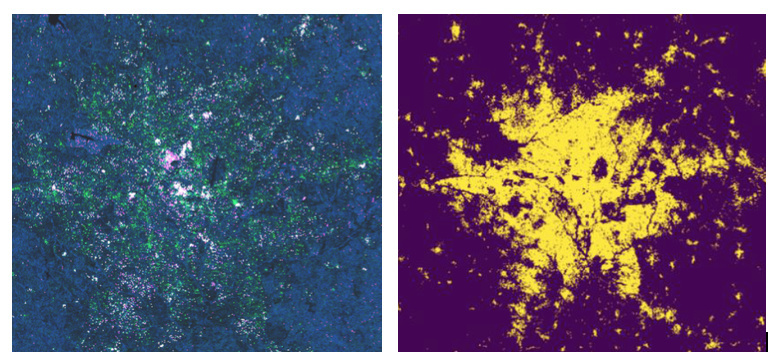I have been testing several of the “custom-script” S1 algorithms in our Open Data Cube environment. Many of them are quite nice and run well. I have questions about two of them and could use some explanation.
Urban Areas by Monja Sebela: This algorithm uses a simple RGB function, where … Red = 5.5 * VH > 0.5, Green = VV and Blue = VH*8. What does the inequality function mean in the Red band? Looking at typical VH power levels for an agricultural region (0.1 to 0.3), the Red band value might be 0.55 to 1.65 for this algorithm. So how does the inequality impact the RGB output?
SAR False Color Visualization by Annamaria Luongo: The script creates an RGB image using several constants (c#) and functions of the VV and VH bands. The Blue band for this algorithm is causing issues. Blue = 0.8 - Math.log (c6 / (c5 - c7 * VV)) where c6=0.05, c5=0.045 and c7=0.9. Since VV is positive and typically 0.2 to 0.5 (power numbers for agriculture), then the value of the function (c5 - c7*VV) is negative. So, we cannot take the LOG of a negative number.
Thanks for the help - Brian


